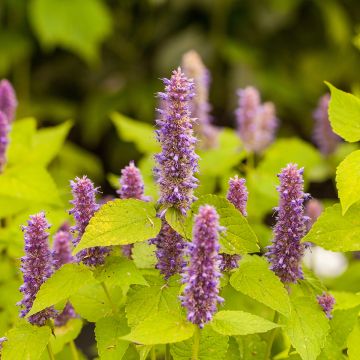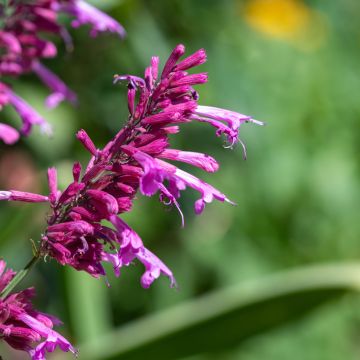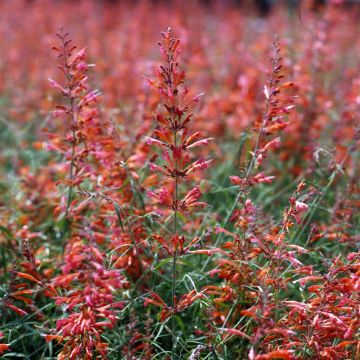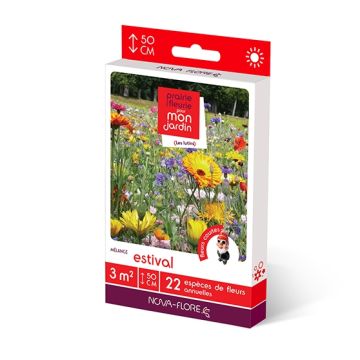

Agastache aurantiaca Apricot Sprite
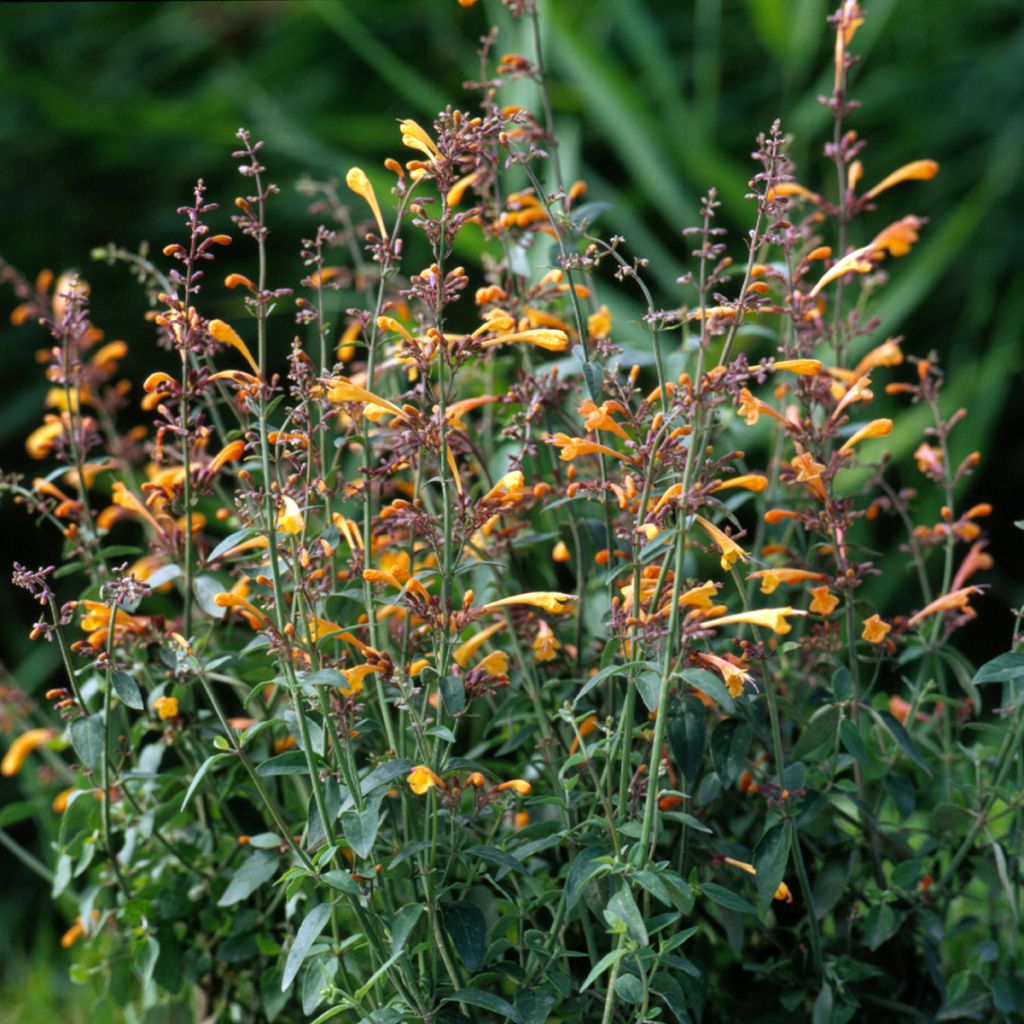

Agastache aurantiaca Apricot Sprite


Agastache aurantiaca Apricot Sprite
Agastache aurantiaca Apricot Sprite
Agastache aurantiaca Navajo Sunset
Orange Hummingbird Mint, Orange Agastache, Sunset Hyssop, Mexican Hyssop
This item cannot be shipped to the selected country
Dispatch by letter from €3.90
More information
Schedule delivery date,
and select date in basket
This plant carries a 6 months recovery warranty
More information
We guarantee the quality of our plants for a full growing cycle, and will replace at our expense any plant that fails to recover under normal climatic and planting conditions.
Seed-only orders are dispatched by sealed envelope. The delivery charge for seed-only orders is €3.90.
Does this plant fit my garden?
Set up your Plantfit profile →
Description
The Agastache aurantiaca Apricot Sprite, also known as Agastache doré, is a recent hybrid, still little known here. This bushy and woody perennial of short life displays in summer aerial spikes adorned with orange tubular flowers above a silver-green foliage, very aromatic, evoking the pungent scent of peppermint. It blooms tirelessly until October. Its aerial and honey-bearing flowering appears from the first year of cultivation. It is an excellent plant in borders, edges and pots. To be grown in well-drained soil, not too dry to fresh and in the sun.
The Agastache aurantiaca is a plant of the lamiaceae family native to Central America. In nature as well as in the garden, it hybridizes very easily with other agastache species and self-seeds abundantly. Growing up to 50cm (19.7 in), more or less depending on the soil and climate, it presents itself as a bushy and woody clump with an upright habit. Its growth is fast, it reaches maturity in a few months. Its branched stems are adorned with silver-green leaves on the top and whitish on the underside, thin and elongated, with coarsely toothed edges, they are pubescent, and give off a scent blending mint and anise. This plant is mainly cultivated for the transparent and airy beauty of its floral spikes that appear during the summer, from July to October. The small bilabiate tubular flowers, resembling those of sage or fuchsia, are grouped in terminal spikes, brightly colored in apricot, orange, and salmon shades.
The 'Apricot Sprite' agastache is an easy-to-grow, ornamental and very robust plant that adapts to any well-drained soil, not too dry in summer and not excessively chalky. It can withstand light frost, around -7°C. It will find its place in natural or rustic-looking borders, for example, associated with blue asters or in the vegetable garden where it will accompany thyme, summer savory, chervil or basil. It also performs well in pots. The leaves can be used in cooking as a condiment, or in herbal teas after drying.
Report an error about the product description
Agastache aurantiaca Apricot Sprite in pictures
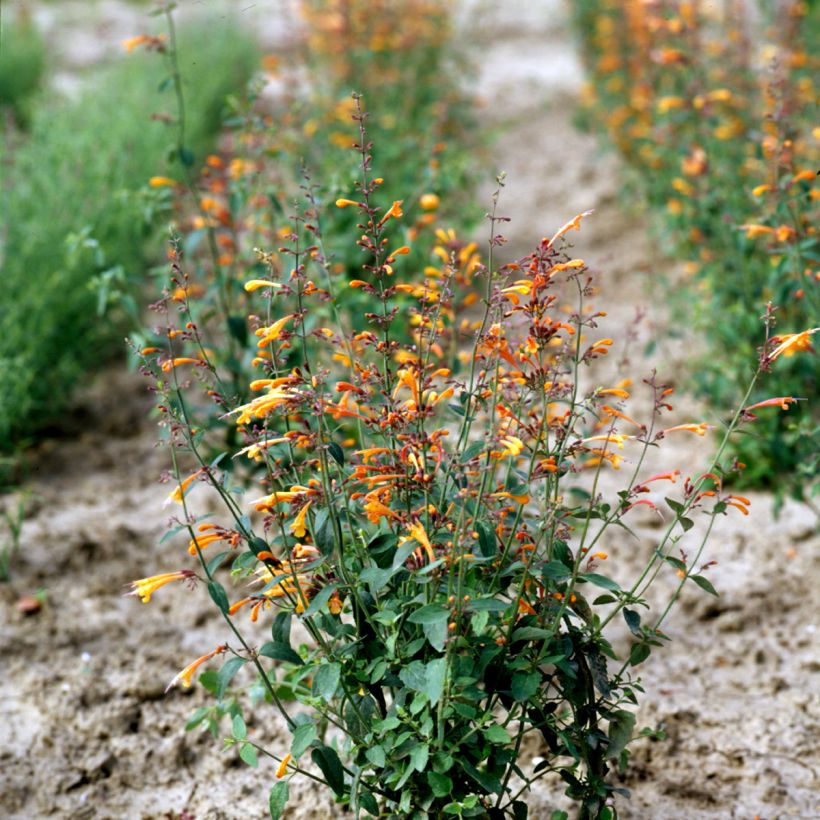

Flowering
Foliage
Plant habit
Botanical data
Agastache
aurantiaca
Navajo Sunset
Lamiaceae
Orange Hummingbird Mint, Orange Agastache, Sunset Hyssop, Mexican Hyssop
Cedronella aurantiaca
Cultivar or hybrid
Other Agastache seeds
Planting and care
Sow Agastache seeds from February to April at 15-20 ° C, on the surface of good quality compost and cover with a fine sprinkle of compost or vermiculite. Keep the soil moist but not waterlogged and keep in light. Place in a propagator or enclose the seed tray inside a polythene bag until germination, which takes between 30 to 90 days. When the plants are large enough to handle, transplant and grow them in cooler conditions until they are sufficiently developed to be planted outside. When all risk of frost has passed, acclimatize them to outdoor conditions for 7 to 10 days. Plant them in their final location outside, in full sun, in fertile and well-drained soil, keeping a distance of 60cm (23.6 in) between each plant.
Sowing period
Intended location
This item has not been reviewed yet - be the first to leave a review about it.
Flower seeds
Haven't found what you were looking for?
Hardiness is the lowest winter temperature a plant can endure without suffering serious damage or even dying. However, hardiness is affected by location (a sheltered area, such as a patio), protection (winter cover) and soil type (hardiness is improved by well-drained soil).

Photo Sharing Terms & Conditions
In order to encourage gardeners to interact and share their experiences, Promesse de fleurs offers various media enabling content to be uploaded onto its Site - in particular via the ‘Photo sharing’ module.
The User agrees to refrain from:
- Posting any content that is illegal, prejudicial, insulting, racist, inciteful to hatred, revisionist, contrary to public decency, that infringes on privacy or on the privacy rights of third parties, in particular the publicity rights of persons and goods, intellectual property rights, or the right to privacy.
- Submitting content on behalf of a third party;
- Impersonate the identity of a third party and/or publish any personal information about a third party;
In general, the User undertakes to refrain from any unethical behaviour.
All Content (in particular text, comments, files, images, photos, videos, creative works, etc.), which may be subject to property or intellectual property rights, image or other private rights, shall remain the property of the User, subject to the limited rights granted by the terms of the licence granted by Promesse de fleurs as stated below. Users are at liberty to publish or not to publish such Content on the Site, notably via the ‘Photo Sharing’ facility, and accept that this Content shall be made public and freely accessible, notably on the Internet.
Users further acknowledge, undertake to have ,and guarantee that they hold all necessary rights and permissions to publish such material on the Site, in particular with regard to the legislation in force pertaining to any privacy, property, intellectual property, image, or contractual rights, or rights of any other nature. By publishing such Content on the Site, Users acknowledge accepting full liability as publishers of the Content within the meaning of the law, and grant Promesse de fleurs, free of charge, an inclusive, worldwide licence for the said Content for the entire duration of its publication, including all reproduction, representation, up/downloading, displaying, performing, transmission, and storage rights.
Users also grant permission for their name to be linked to the Content and accept that this link may not always be made available.
By engaging in posting material, Users consent to their Content becoming automatically accessible on the Internet, in particular on other sites and/or blogs and/or web pages of the Promesse de fleurs site, including in particular social pages and the Promesse de fleurs catalogue.
Users may secure the removal of entrusted content free of charge by issuing a simple request via our contact form.
The flowering period indicated on our website applies to countries and regions located in USDA zone 8 (France, the United Kingdom, Ireland, the Netherlands, etc.)
It will vary according to where you live:
- In zones 9 to 10 (Italy, Spain, Greece, etc.), flowering will occur about 2 to 4 weeks earlier.
- In zones 6 to 7 (Germany, Poland, Slovenia, and lower mountainous regions), flowering will be delayed by 2 to 3 weeks.
- In zone 5 (Central Europe, Scandinavia), blooming will be delayed by 3 to 5 weeks.
In temperate climates, pruning of spring-flowering shrubs (forsythia, spireas, etc.) should be done just after flowering.
Pruning of summer-flowering shrubs (Indian Lilac, Perovskia, etc.) can be done in winter or spring.
In cold regions as well as with frost-sensitive plants, avoid pruning too early when severe frosts may still occur.
The planting period indicated on our website applies to countries and regions located in USDA zone 8 (France, United Kingdom, Ireland, Netherlands).
It will vary according to where you live:
- In Mediterranean zones (Marseille, Madrid, Milan, etc.), autumn and winter are the best planting periods.
- In continental zones (Strasbourg, Munich, Vienna, etc.), delay planting by 2 to 3 weeks in spring and bring it forward by 2 to 4 weeks in autumn.
- In mountainous regions (the Alps, Pyrenees, Carpathians, etc.), it is best to plant in late spring (May-June) or late summer (August-September).
The harvesting period indicated on our website applies to countries and regions in USDA zone 8 (France, England, Ireland, the Netherlands).
In colder areas (Scandinavia, Poland, Austria...) fruit and vegetable harvests are likely to be delayed by 3-4 weeks.
In warmer areas (Italy, Spain, Greece, etc.), harvesting will probably take place earlier, depending on weather conditions.
The sowing periods indicated on our website apply to countries and regions within USDA Zone 8 (France, UK, Ireland, Netherlands).
In colder areas (Scandinavia, Poland, Austria...), delay any outdoor sowing by 3-4 weeks, or sow under glass.
In warmer climes (Italy, Spain, Greece, etc.), bring outdoor sowing forward by a few weeks.






































